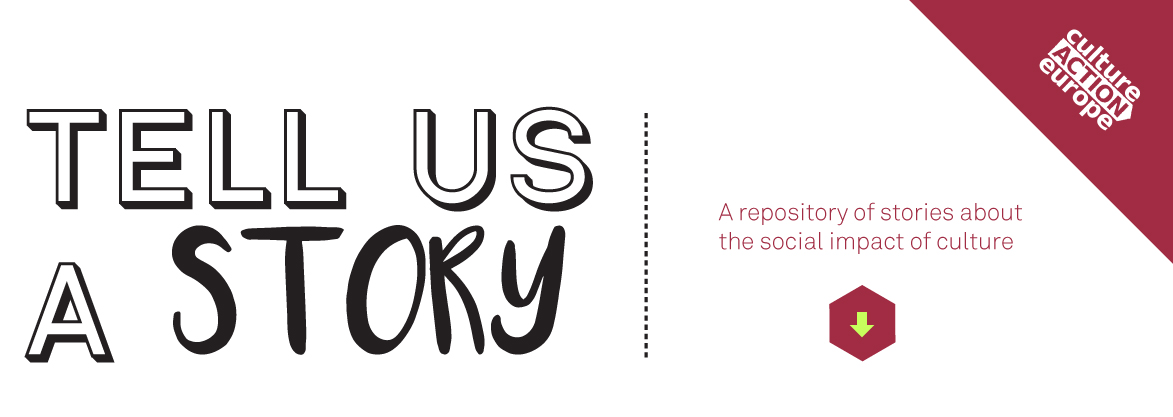Romanae Antiquitates
Tell us a story: Romanae Antiquitates

Title of the project: Romanae Antiquitates
Please describe your action/project
Eccom realized a training course for specialized workers in archaeological excavations addressed to offenders in the prison of Rebibbia, Rome. The course was funded by the Province of Rome and trained 20 offenders in two years. During the course, the attendants had the chance to restore archaeological objects found in a cemetery located underneath the prison, which have been exhibited in an archaeological museum – “Romanae Antiquitates” – entirely realized by them. The realization of the museum was funded by the Ministry of Justice.
Tell us something more about your project/activity:
Duration: from 20/09/2006 to 20/05/2010
Location: Rome, prison of Rebibbia Nuovo Complesso
Field/discipline: archeology, museology, social inclusion through cultural activities, social rehabilitation, job creation, employability
The actors
The activity was realized by “ECCOM-European Centre for Cultural Organization and Management” (by Mr. Emilio Cabasino and Ms. Cristina Da Milano) and by the social co-operative “Cecilia” (by Lillo Di Mauro). It was funded by the Ministry of Justice and by the Province of Rome and it was supported by the Ministry of Culture – Archaeological Superintendency of Rome.
The people who received the most significant impact
The whole activity was addressed to 20 adult offenders, selected by the social co-operative Cecilia according to their personal skills/competences and legal situation (they were meant to be freed quite soon in order to have the opportunity to work in archaeological excavations). There were some expected impacts (such as learning, increase of self-esteem and social capabilities) however, we experienced that there were also some unexpected impacts: we saw a radical change in perspectives, values of the offenders and – in some cases – a radical change in lives.
The context
Most of the selected offenders have always lived in marginalized conditions, stopped their educational careers very early and lived their lives behaving illegally. They were all aged between 40 and 60 and lead a rather empty life in prison, with no chance of working or of being involved in recreational/cultural activities except for watching television and – in some cases – the use of the library.
Expected and actual results
The expected results were linked to the increase of knowledge through the learning processes; the increase of self-esteem and of the capability of having correct social relationships among themselves and also with other people. The project went far beyond these results, since it lead to a radical change of values and behaviours, which in some cases brought some of them to live a completely different life once they were freed.
Resources
The project was realized in scarcity of financial resources and in difficult conditions, due to the ostracism of the hosting institution (i.e. the personnel) which did not facilitate our work at all. The project required a massive effort in terms of time that each of the individuals involved (team members, archaeologists, restorers, architects, etc.) spent there and in terms of commitment and human relationships, which were sometimes very demanding and quite exhausting.
The main change
The main challenges were due to the difficulty of the context (time constraints; hostility of the prison personnel and of some of the attendants, especially at the beginning; environmental conditions); the scarcity of financial resources; the difficult relationship among partners with different objectives and strategies; the lack of training of some of the team members who never worked in such a context before. All these obstacles have been overcome thanks to a great deal of patience, resilience and empathy.
The main area of impact
The main impacts that the project had have been in terms of permanent/long lasting change in knowledge, attitudes, awareness, behavior, perception, self-esteem and social relations. Unfortunately, due to the incompetence of the social co-operative, who was in charge of following the offenders after they were freed and helping them to find a job in the archaeological field, none of the offenders had the chance to actually exploit the knowledge and competences acquired during the activities.
The Big Idea
The “big idea” behind the activity was that human beings need more than just food and shelter, they need also spiritual and cultural nourishment in order to fully develop themselves. Therefore, especially in marginalized contexts, it is vital to provide them with inputs which can change their set of values in order to re-shape their lives. Culture – in broad terms – has this power, since it gives sense to the present through the discovery of the past and helps individuals finding their role within society.



